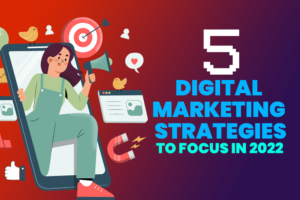Retargeting on Facebook has become an increasingly popular and effective way for businesses to reach their target audience and increase their return on investment (ROI) in recent years. Retargeting is a marketing technique that targets users who have already interacted with a business’s website or social media accounts but have not yet converted into customers. By showing targeted ads to these users on Facebook, businesses can encourage them to complete a purchase or take some other desired action. Let’s understand what is Facebook retargeting and how it works
What is Facebook Retargeting?
Facebook retargeting, also known as Facebook remarketing, is a type of retargeting that involves targeting individuals who have previously interacted with a business on Facebook or its associated platforms, such as Instagram or Messenger. This technique allows businesses to serve targeted ads to individuals who have already shown some level of interest in their products or services.
Facebook retargeting works by placing a tracking pixel on a website or app that captures user information and allows businesses to serve them targeted ads across Facebook’s various platforms. For example, if someone visits a business’s website but doesn’t make a purchase, the business can use Facebook retargeting to serve them ads promoting the product they were interested in or offering a discount to encourage them to complete the purchase.
One of the benefits of Facebook retargeting is its ability to reach a large audience. With over 2.7 billion monthly active users, Facebook is one of the most popular social media platforms in the world, making it an ideal platform for businesses to reach potential customers. Additionally, Facebook’s targeting capabilities are highly sophisticated, allowing businesses to target individuals based on a wide range of demographics, interests, behaviors, and more.
Reasons to include Facebook Remarketing in your strategy
One reason why retargeting on Facebook has grown in popularity is because of the platform’s massive user base. With over 2.9 billion monthly active users as of September 2021, Facebook offers a vast audience that businesses can target with their ads. Additionally, Facebook’s ad targeting tools allow businesses to reach users based on a variety of factors, including their interests, behaviors, and demographics.

Another reason why retargeting on Facebook has become more effective is because of advancements in ad personalization and optimization. Facebook’s machine learning algorithms are able to analyze user behavior and show ads that are more likely to resonate with them. This means that businesses can create highly targeted and personalized ads that are more likely to convert.
Furthermore, retargeting on Facebook has also become more cost-effective in recent years. With the rise of ad automation and dynamic ad formats, businesses can create and run ads at a lower cost than traditional advertising methods. This means that businesses can get more bang for their buck and achieve a better ROI with their Facebook retargeting campaigns.
However, it’s important to note that Facebook retargeting must be done carefully and respectfully to avoid annoying or alienating potential customers. Businesses must ensure that their ads are relevant and valuable to the individual and avoid bombarding them with too many ads. When done correctly, Facebook retargeting can be a highly effective way to increase brand awareness, engagement, and ultimately, conversions.
Types of Retargeting
Retargeting comes in two main types: pixel-based and list-based. Each method works slightly differently and offers unique benefits depending on the objectives of your campaign.
Pixel-Based Retargeting
Pixel-based retargeting is the most widely used type of retargeting. It involves re-displaying your content to anonymous site visitors. A small piece of JavaScript, commonly known as a pixel, is placed on the browser of anyone who visits your website. This makes their browser “cookie-d,” and when they leave your site, retargeting platforms receive a notification to serve specific ads based on the pages they viewed on your website.

Pixel-based retargeting offers several benefits, including timeliness, specificity, and behavior-based targeting. However, there are some downsides, such as lower volume of people in the campaign at any given time and the complexity of implementing JavaScript on multiple website pages.
List-Based Retargeting
List-based retargeting requires you to have someone’s contact information in your database. You can upload lists of email addresses to a retargeting campaign on social networks like Facebook or Twitter. The platform then identifies users on the network who have those email addresses and serves retargeting ads to them.

List-based retargeting offers highly customizable criteria for your ads since it’s based on more than behavior. However, there are some limitations, such as the possibility that the email address you have may differ from the one on the social network. Additionally, maintaining the list can be less automatic and timely than pixel-based retargeting.
In contrast to remarketing, retargeting has its unique features and benefits. Knowing when to use either technique depends on your marketing goals and the type of audience you are targeting.
Remarketing vs Retargeting
Retargeting and remarketing are often mistakenly used interchangeably, despite their differences. Retargeting involves reaching new prospects with your ads, whereas remarketing is about reigniting interest in your company among existing or inactive customers.
Retargeting enables you to showcase how your product or service fits into the lifestyle of people who have never heard of your company, or solve a potential problem for them. By doing so, you can personalize the message and make it more effective.
By analyzing sales data, you can identify what is popular among your target audience. For example, if you discover that a specific line of products performs exceptionally well among millennials, you can create a carousel ad featuring those products and use it to retarget customers. This kind of personalized ad aimed at a specific segment of your target market is an excellent example of how retargeting can yield successful results.
How to do Retargeting on Facebook
Install Facebook Pixel on your website – Facebook Pixel is a tracking code that tracks users’ behavior on your website. It helps you understand the actions people take on your site, which pages they visit, and what they do while they are there.
Define your audience
Once you have Facebook Pixel installed on your website, you can create custom audiences based on specific actions users take on your site, such as pages they visit, time spent on your site, or products they add to their cart but don’t purchase. You can also create a custom audience based on your email list or customer database.
Create a retargeting ad campaign
In the Facebook Ads Manager, select the “Create Campaign” button and choose the “Traffic” objective. Next, choose your custom audience from the list and specify the ad placement, budget, and schedule for your campaign.
Design your ad
The ad you create should be tailored to your custom audience. You can use different ad formats, such as images, videos, or carousel ads, and include a call-to-action that encourages users to engage with your brand.
Launch your ad
Once you’ve designed your ad, set your budget and schedule, and confirmed the placement, you can launch your ad. You can track your ad’s performance and adjust your targeting, messaging, and budget based on the results.
Analyze your results
After your ad has run for a while, you can analyze its performance to see how it’s doing. Look at metrics such as click-through rate, conversion rate, and cost per click to see how effective your ad is.
Want to execute retargeting by yourself? Wait! You need experience.
Retargeting on Facebook can be a powerful tool for reaching potential customers who have already shown interest in your product or service. However, it’s important to exercise caution before jumping in. Without the proper expertise, retargeting ads can be ineffective or even do more harm than good.
That’s why it’s important to work with experienced professionals who understand the nuances of Facebook retargeting. Paze International is one such agency, with a track record of executing successful retargeting campaigns that have resulted in quality leads and better return on investment for their clients.
By partnering with an agency like Paze International, businesses can tap into the expertise and resources needed to create effective Facebook retargeting campaigns. From developing custom audience lists to creating personalized ads, their team can guide businesses through every step of the process and ensure that their campaigns are targeting the right audience with the right message.
Ultimately, investing in the expertise of an experienced agency can save businesses time, money, and frustration, while also increasing the effectiveness of their Facebook retargeting efforts. So, if you’re considering retargeting on Facebook, it’s important to be cautious and work with the right experts to achieve your desired results.
We are a digital growth agency and provide full fledge digital marketing and branding services:
Digital Marketing Services
- Google Paid Search & Digital Advertising
- Influencer Marketing
- Social Media Marketing
- Facebook & Social Advertisements
- Search Engine Optimization
- Email Marketing
- Lead Generation
- Content Marketing
Website Development Services
- Business Websites
- Ecommerce
Branding
- Logo Design
- Corporate Stationery
- Brochure Designing
- Marketing Collateral – Online and Print Ads
- Designing – Hoarding, Posters, Banners, Flyers, Backdrops, Standee, POS, Kiosk





